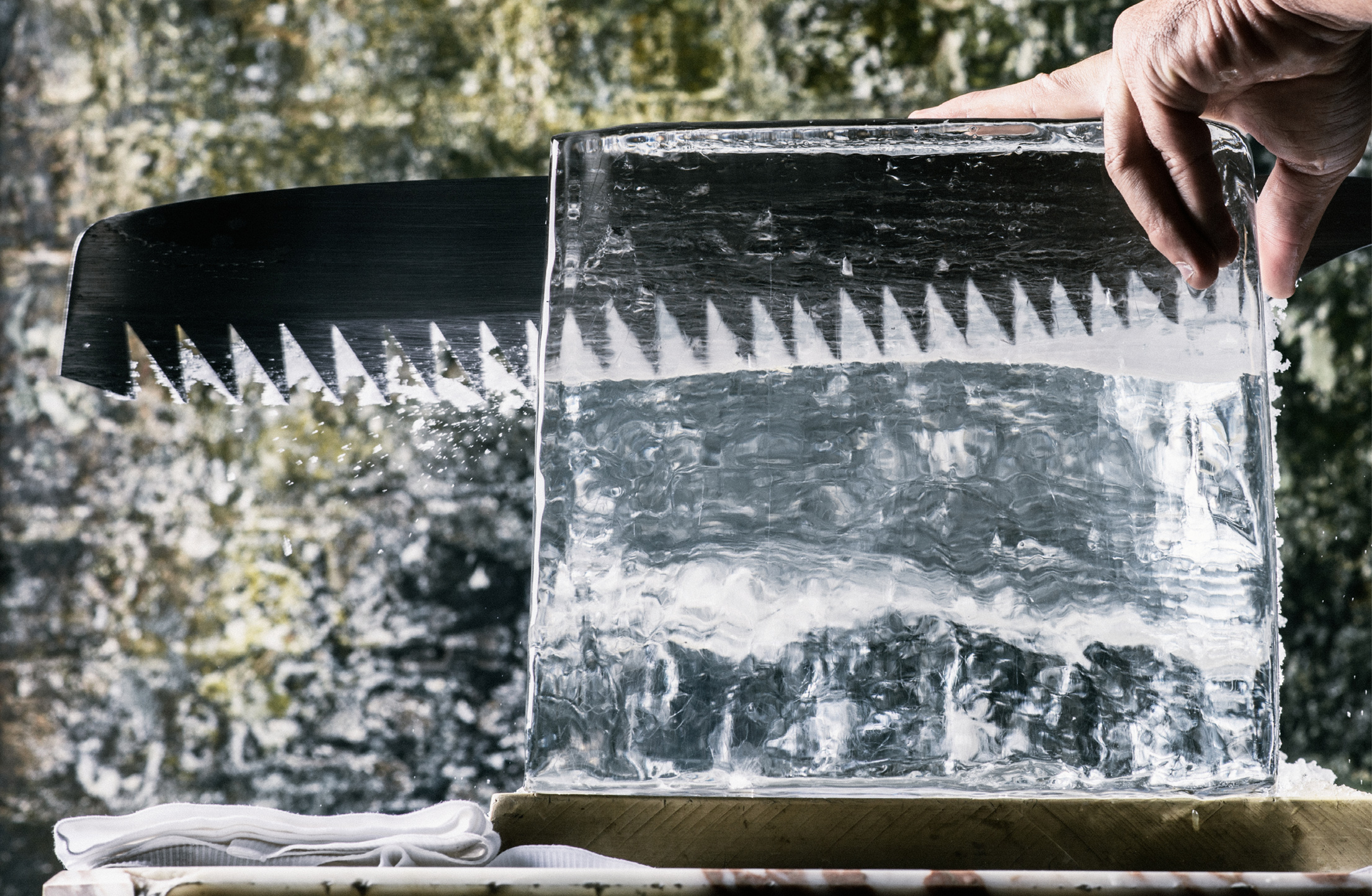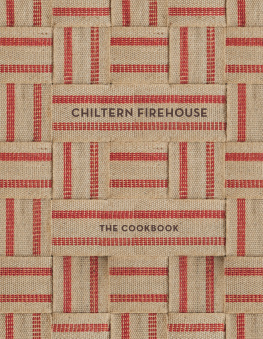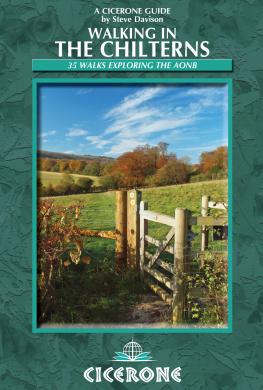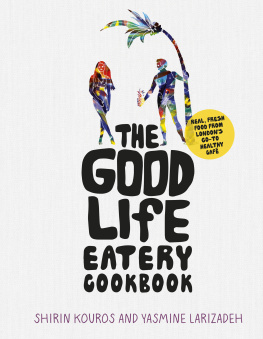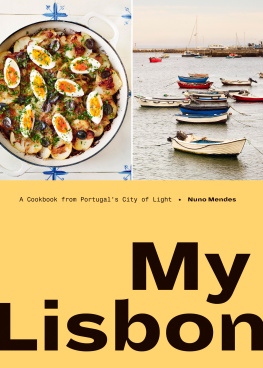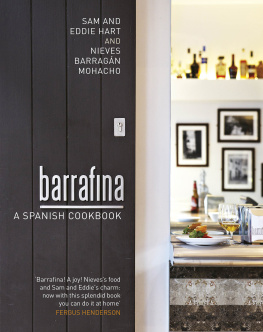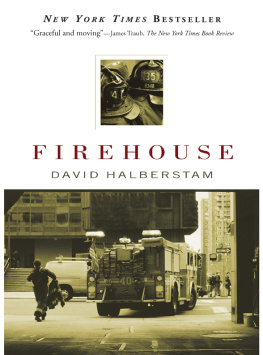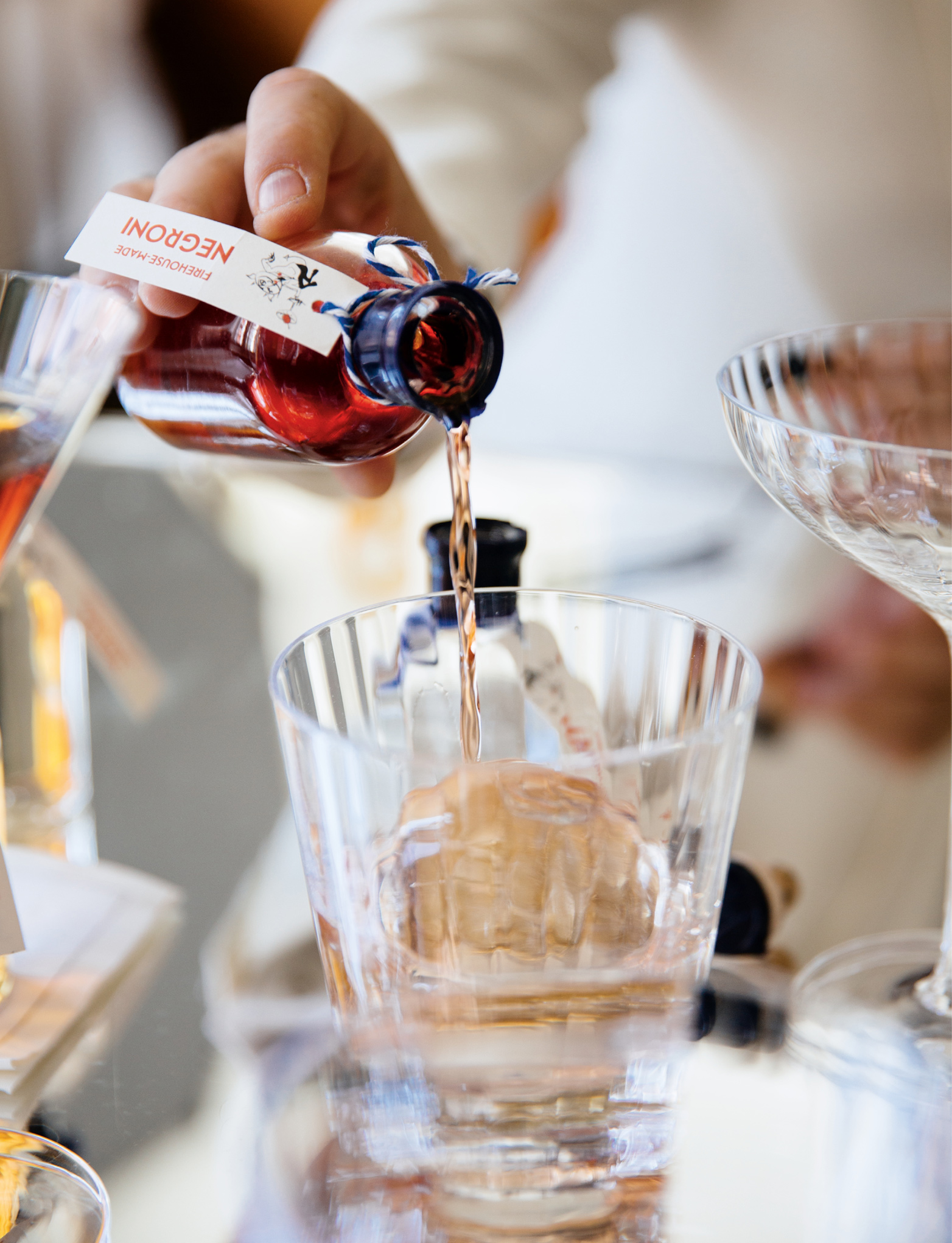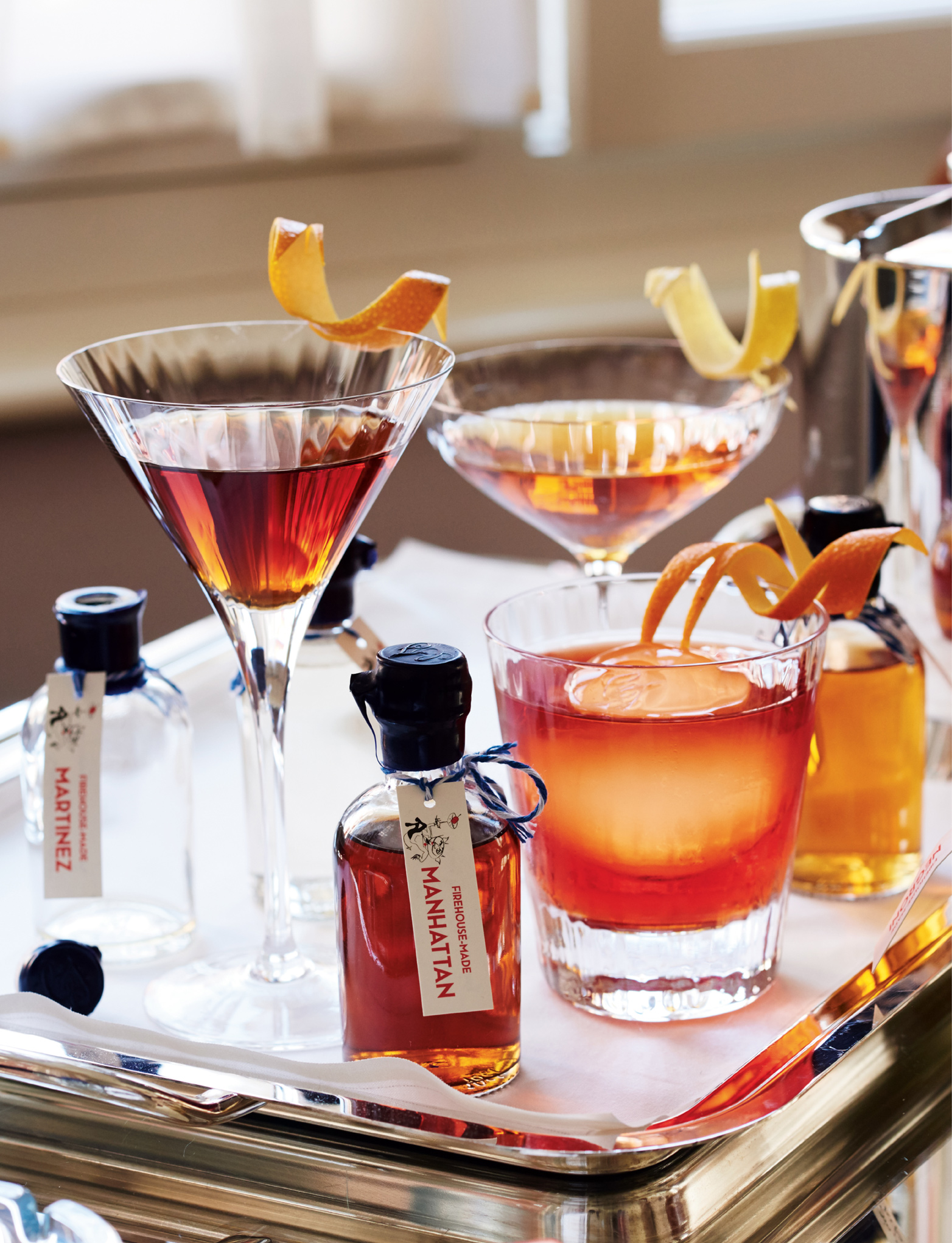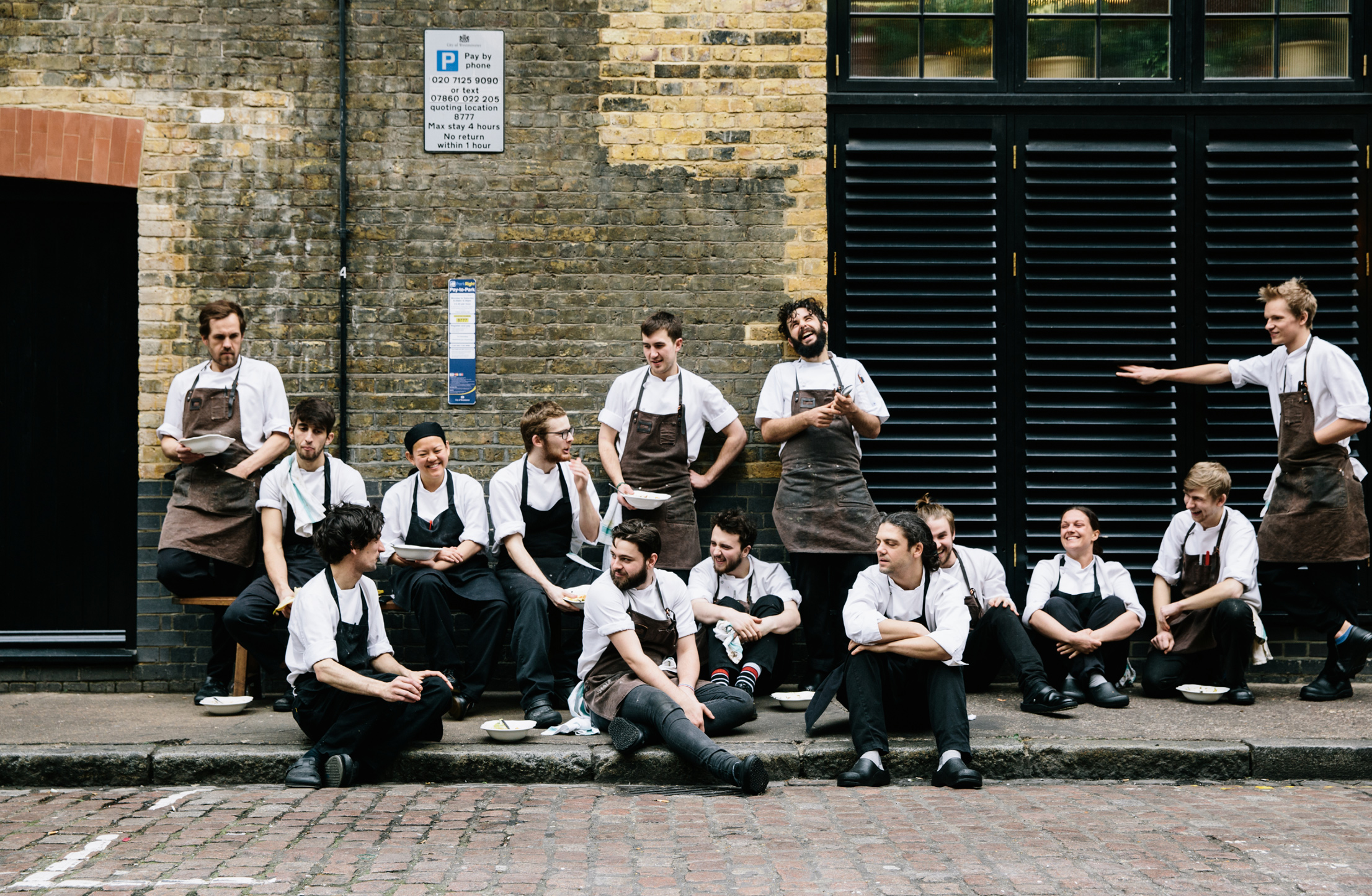Luis Simoes, our head barman and mixologist, spent months developing the recipes for our bottled cocktails. They are the Firehouse Classics, five interpretations of the traditional cocktail, all with a unique recipe, cooked in a sous vide for twenty-four hours. The long heating allows the flavors to round and mellow for a blend of subtle layers. Some think that the flavor profile is even better than that of fresh cocktailssomething to be savored after hours.
THE LOVE OF A GOOD COCKTAIL
EVERYONE ENGAGED IN A LOVE AFFAIR with cocktails knows, for certain, that their go-to drink is the climactic test of a bartenders skills. For Luis Simoes, who directs the bar menus at the Firehouse, that drink would be a Manhattan. Its componentswhiskey, vermouth, bitters, and icerepresent the canonical ingredients upon which cocktail-making is formed.
HEY BARTENDER
No one knows exactly when the first ritual act of shaking or stirring those ingredients together took place. It may have been in New Orleans in the 1850s, or in New York a decade later: the invention of the cocktail is a tale as vague and convoluted as the birth of the blues. What is known, or at least strongly suspected, is that distilled spirits of that era had a rotgut charm that only a gunslinger in a Wild West saloon could appreciate neat. So spirits were already being mixed with other ingredients: the punches beloved of Charles Dickens and Enlightenment thinkers were an early prototype of the mixed cocktail, albeit without the vermouth.
Vermouths may (or may not) have been around since the time of the pharaohs. Their screwball history includes stints as curatives, royal elixirs, and an unlikely remedy for the plague. When they were first imported to America in the mid-nineteenth century, they found unexplained popularity among Californias gold prospectors, earning the reputation as the drink of miners and whores. On the East Coast, meanwhile, they began to appear on higher-toned drinks lists, first as wines and then as mixers with spirits, often alongside splashes of aromatic bitters, which had begun to wend their way north from New Orleans.
How these ingredients met is ultimately less significant than the results of their consummation. Luis describes it as a marriage in multiple dimensions, which is to say that creating the perfect cocktail is a ceaseless quest for harmony, with the constant possibility of discord. The bedrock is the spirit, but the varying profiles of spirits make it a fluid foundation. In Luis words:
In a Manhattan, using a single malt rather an American whiskey requires an entirely different vermouth. The vermouth counterbalances and answers the flavors in the whiskey. It is the bridge that connects all the ingredients. You want one unified flavor. It should evolve on the palate, but at no point should the whiskey, the vermouth, or the bitters dominate.
Creating the perfect cocktail is a ceaseless quest for harmony, with the constant possibility of discord.
Growing up, Luis went through the usual late-adolescent abuse of vermouthhis weakness was a Martini Rosso and Cokebut something clicked, and he left the sinners tent with an appreciation for the complexities of the historic vermouths of Italy and France: It changed my perception of drinks. The richness of vermouthsthe amaros, rossos, biancos, ross, each with their different combinations of floral notes, spices, vegetable notes, sweetness, and bitternessthey led me to think about cocktails differently, looking closer at their origin. There are more than fifty vermouths stocked at the Firehouse, and they play a crucial role in almost all our cocktails, and are often used in combinations of two or more varieties. An assortment of bittersAngostura, orange, vanilla, grapefruit, Creole, chocolate, and hellfirealong with concentrates of lime, lemon, and orange serve to intensify flavor and add unsugared aromatics. Our house-made syrups and macerations (beginning on ) are a professional bartenders way of capturing the essence of seasonal fruits and nuts without the sweetness and artificiality of flavored liqueurs. All that stands between these ingredients and a perfect cocktail is a short list of easily mastered rules and techniques that typically divide the pro and the amateur mixologist.
THE FIREHOUSE METHOD
THE ALCOHOL
Freshness is key. Dont imagine that the bottle of gin or whiskey that was opened a year ago will impart the depths of flavor that your cocktail craves. Spirits deteriorate like all alcohols, just more slowly. As a general rule, its best to finish an opened bottle within six months. Gins and vodkas store well in the fridge, which will extend their life closer to a year. Vodka can be stored in the freezer, but gin not so much.
Vermouths decline much more rapidly. Always store them in the fridge once opened, and use up an opened bottle within three weeks. Vermouths are at their very best in the first week of being open.
THE ICE
Ice for cocktails should be made from filtered or distilled water and used smoking cold, straight from the freezer. Ice has two roles in drinks: to dilute and to chill. Of the two, diluting is unquestionably the more important. The ability to correctly dilute a drink is what makes for truly excellent cocktails, in the same way that proper seasoning elevates the simplest of dishes. Proper dilution allows a cocktails often very intense ingredients to be tamed and blended together in harmony. The reduction in temperature is a happy coincidence of dilution. A cocktail must be properly diluted first, and at the correct temperature second. The reason for this is that a cocktails temperature will change no matter what, but dilution is final (unless the drink is served on ice). Generally speaking, there is a direct correlation between chilling and melting, so a cocktail that is shaken or stirred to the perfect level of dilution will also be nice and cold. For a drink served on the rocks, always discard the mixing ice and add fresh ice to the serving glass. The purpose of the second ice is purely to maintain temperature without further diluting the drink. Thus, for a drink such as an Old Fashioned, one giant cube, spherical or square, is optimal. Molds for making monster ice cubes are readily available, and are worth the small investment. Should you find yourself without one, a useful trick is to half-fill a rocks glass with filtered water and freeze it, then build the drink on top of the ice. In a short time, the sides of the glass will have warmed sufficiently to release a large, slow-melting cube that will last for half an hour or more.
